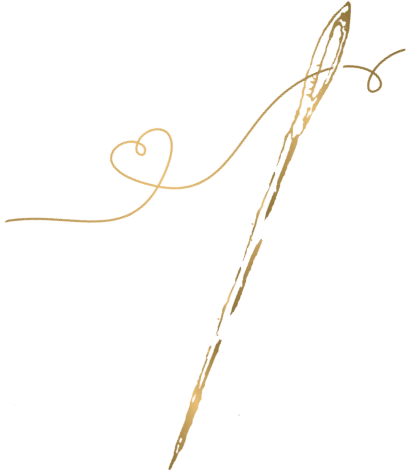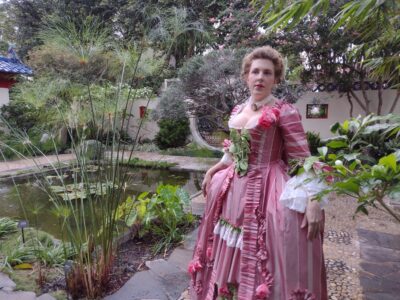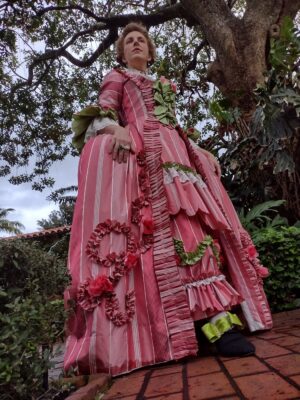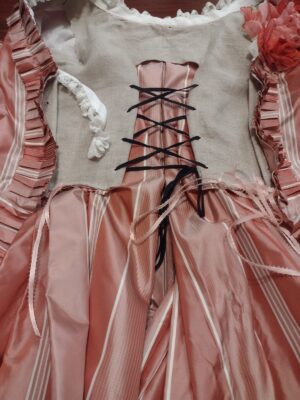FOUNDATIONS REVEALED COMPETITION ENTRY

Robe à la Floridienne

Outline the story …
Shopping for new fabric is one of the greatest gifts a maker can give themselves, and this is often where my inspiration begins. Here in South Florida, where I was born and raised, we are surrounded by nature, beautiful tropical flowers, exotic birds, and trees that are always green. We also have a proud tradition of fine textile dealers who get their inspiration from the striking effusion of natural beauty that surrounds us in this strange paradise.
At one of these stores in March of 2020, I found the perfect silk taffeta. I bought the 10 remaining yards as a 30th birthday present to myself. I had decided that this fabric would become a robe á la française, but I wanted a contrasting trim. Being a native Floridian and having a lifelong love of brightly colored Lily Pulitzer dresses, I knew that the best possible contrast to this lovely shade of pinkish coral, is lime green. By way of fate or perhaps divine intervention, a kind lady gifted me a black garbage bag filled with remnants of silk. One of these remnants was a 2-yard piece of, not lime green, but mint green silk taffeta. The colors complemented each other perfectly! I wanted to create a gown worthy of Madame du Pompadour, that also spoke to my identity as a Floridian, and now I had my fabrics! It would be another two years before I would make my initial illustration.
Outline the construction…
For the patterning and construction of this, my first ever attempt at a robe á la française, I relied heavily on Patterns of Fashion 1 and 6, as well as The American Duchess Guide to 18th Century Dressmaking. I made no paper patterns or mockups and constructed the dress in the traditional 18th century method of fitting the bodice lining and draping the fabric directly on the body. This was a serious challenge, but I learned a great deal. I used a combination of primarily hand sewing, and a bit of machine sewing. I started by fitting the bodice lining over my mannequin, and then tried it on over my stays, making the necessary adjustments to the shoulder and side seams before hand-stitching the grommet holes.
I then cut panels of silk for the sides and back of the gown, as well as the front bodice pieces. At this point I machine stitched the skirt panels together. Then I began pleating the back pleats before hand-stitching them down to the bodice lining. I stitched the front bodice pieces in place, then pleated and stitched down the skirt panels to the bodice. I made the back of the petticoat out of plain linen to save fabric. Next, I added sleeves and shoulder straps, made a stomacher, and added two large metal eyes and ribbon ties for retrousée. I then spent many days pinking, hand-gathering, and applying several yards of trim, lace, bows, and ombre coral chiffon roses.






I like how you wove in your Floridian identity with this beautiful beautiful gown. I can’t imagine how much time it took!
Thank you so much! <3 It took me about 3 months, only being able to work in my free time at night and on the weekend because I work 9:00 to 5:00 as a seamstress. I'm not sure how many hours exactly. And it probably took me another month and a half in 2022 to make my 1760s stays, which you can see on my Instagram @burntfeatherscouture